Fractal Dimension as an Effective Feature for Characterizing Hard Marine Growth Roughness from Underwater Image Processing in Controlled and Uncontrolled Image Environments
Abstract
1. Introduction
2. Case Studies
2.1. Underwater Image Acquisition
2.2. Artificial Coupon and Test Tank
2.3. On-Site Measurements
3. Isolation of Specimens, Quality of Measurement, and Roughness Mathematical Modeling
3.1. Automatic Segmentation
3.2. Configurations of the Tests
3.3. Height Measurement
3.4. Indicators of Quality of Measurement
3.5. Estimation of Natural Roughness through Fractal Dimension
4. Results in Laboratory and on Site
4.1. Results from Measurements for Each Protocol in Laboratory
4.2. Evaluation of the Indicators in Laboratory
4.3. ROC Curves for Detection Assessment in Laboratory
4.4. 2D-Fractal Dimension Assessment on Site
5. Discussion and Conclusions
Author Contributions
Funding
Institutional Review Board Statement
Informed Consent Statement
Data Availability Statement
Conflicts of Interest
References
- Heaf, N.J. The Effect of Marine Growth on the Performance Of Fixed Offshore Platforms in the North Sea. In Proceedings of the Offshore Technology Conference, Houston, TX, USA, 30 April–3 May 1979; p. 14. [Google Scholar] [CrossRef]
- Jusoh, I.; Wolfram, J. Effects of marine growth and hydrodynamic loading on offshore structures. J. Mek. 1996, 1, 77–98. [Google Scholar]
- Picken, G.B. Review of Marine Fouling Organisms in the North Sea on Offshore Structures. Discussion Forum and Exhibition on Offshore Engineering with Elastomers; Plastics and Rubber Instute: UK, London, 1985; Volume 5, pp. 5.1–5.10. [Google Scholar]
- Boukinda, M.L.; Schoefs, F.; Quiniou, R.V.; Birades, M. Marine growth colonization process in guinea gulf: Data analysis. J. Offshore Mech. Arct. Eng. 2007, 129, 97–106. [Google Scholar] [CrossRef]
- Ameryoun, H. Probabilistic Modeling of Wave Actions on Jacket Type Offshore Wind Turbines in Presence of Marine Growth. Ph.D. Thesis, Université de Nantes Faculté des Sciences et des Techniques, Nantes, France, 2015. [Google Scholar]
- Theophanatos, A. Marine Growth and Hydrodynamic Loading of Offshore Structures. Ph.D. Thesis, University of Strathclyde, Glasgow, UK, 1988. [Google Scholar]
- Zdravkovich, M.M. Flow Around Circular Cylinders, 1st ed.; Oxford University Press: Oxford, UK, 2002; Volume 2. [Google Scholar]
- Schoefs, F.; Boukinda, M.L. Sensitivity Approach for Modelling Stochastic Field of Keulegan Carpenter and Reynolds Number Through a Matrix Response Surface. J. Offshore Mech. Arct. Eng. 2010, 132, 1–7. [Google Scholar] [CrossRef]
- Ameryoun, H.; Schoefs, F.; Barillé, L.; Thomas, Y. Stochastic modeling of forces on jacket-type offshore structures colonized by marine growth. J. Mar. Sci. Eng. 2019, 7, 158. [Google Scholar] [CrossRef]
- Schoefs, F. Sensitivity approach for modelling the environmental loading of marine structures through a matrix response surface. Reliab. Eng. Syst. Saf. 2008, 93, 1004–1017. [Google Scholar] [CrossRef][Green Version]
- API-RP-2A WSD. Recommended Practice for Planning, Designing and Constructing Fixed Offshore Platforms-Working Stress Design; American Petroleum Institute: Washington, DC, USA, 2005. [Google Scholar]
- DNV. Recommended Practice DNV-RP-C205. Environmental Conditions and eEvironmental Loads; Det Norske Veritas: Hovik, Norway, 2017. [Google Scholar]
- Bakhtiari, A.; Schoefs, F.; Ameryoun, H. Unified Approach for Estimating of the drag Coefficient in Offshore Structures in Presence of Bio-Colonization. In Proceedings of the 37th International Conference on Offshore Mechanics and Arctic Engineering (ASME 2018), Madrid, Spain, 30 December 2018; p. 7. [Google Scholar]
- Bakhtiari, A.; Schoefs, F.; Ameryoun, H. A review of the biofouling parameters influencing the drag force coefficient of offshore structures. In Proceedings of the 3rd International Conference on Renewable Energies Offshore (RENEW 2018), Lisbon, Portugal, 8–10 October 2018; p. 8. [Google Scholar]
- O’Byrne, M.; Schoefs, F.; Pakrashi, V.; Ghosh, B. An underwater lighting and turbidity image repository for analysing the performance of image based non-destructive techniques. Struct. Infrastruct. Eng. 2018, 14, 104–123. [Google Scholar] [CrossRef]
- OByrne, M.; Ghosh, B.; Schoefs, F.; Pakrashi, V. Image-Based Damage Assessment for Underwater Inspections, 1st ed.; CRC Press: Boca Raton, FL, USA, 2018; ISBN-10: 1138031860. [Google Scholar]
- OByrne, M.; Schoefs, F.; Pakrashi, V.; Ghosh, B. A Stereo-Matching Technique for Recovering 3D Information from Underwater Inspection Imagery. Comput. Aided Civ. Infrastruct. Eng. 2018, 33, 193–208. [Google Scholar] [CrossRef]
- Decurey, B.; Schoefs, F.; Barillé, A.L.; Soulard, T. Model of Bio-Colonisation on Mooring Lines: Updating Strategy based on a Static Qualifying Sea State for Floating Wind Turbine. J. Mar. Sci. Eng. 2020, 8, 108. [Google Scholar] [CrossRef]
- Quirk, L.; Matos, J.; Murphy, J.; Pakrashi, V. Visual Inspection and Bridge Management. J. Struct. Infrastruct. Eng. 2018, 14, 320–332. [Google Scholar] [CrossRef]
- O’Donnell, D.; Murphy, J.; Pakrashi, V. Comparison of Response Amplitude Operator Curve Generation Methods for Scaled Floating Renewable Energy Platforms in Ocean Wave Basin. ASME Lett. Dyn. Syst. Control 2021, 1, 021012. [Google Scholar] [CrossRef]
- ODonnell, D.; Murphy, J.; Pakrashi, V. Damage Monitoring of a Catenary Moored Spar Platform for Renewable Energy Devices. Energies 2020, 13, 3631. [Google Scholar] [CrossRef]
- LEHERO-MG. Load Effect of Heterogeneous Roughness of Marine Growth–2017–2020. Research Project Founded by WEst Atlantic Marine Energy Community and Leaded by Université de Nantes (Pr. F. Schoefs). Available online: https://www.weamec.fr/en/projects/lehero-mg/ (accessed on 17 November 2021).
- Bakhtiari, A.; Schoefs, F.; Berhault, C.; Ameryoun, H. Evaluation of marine growth parameters effects on offshore structures loading. In Proceedings of the 54th ESReDA Seminar on Risk, Reliability and Safety of Energy Systems in Coastal and Marine Environments Nantes, Nantes, France, 25–26 April 2018. [Google Scholar]
- OByrne, M.; Schoefs, F.; Ghosh, B.; Pakrashi, V. Evaluation of camera calibration techniques for quantifying deterioration. In Proceedings of the Civil Engineering Research in Ireland 2016 (CERI2016), National University of Ireland, Galway, Ireland, 29–30 August 2016. [Google Scholar]
- Rouhan, A.; Schoefs, F. Probabilistic modeling of inspection results for offshore structures. Struct. Saf. 2003, 25, 379–399. [Google Scholar] [CrossRef]
- Pakrashi, V.; Schoefs, F.; Memet, J.B.; OConnor, A. ROC Dependent Event Isolation Method for Image Processing Based Assessment of Corroded Harbour Structures. J. Struct. Infrastruct. Eng. 2010, 6, 365–378. [Google Scholar] [CrossRef]
- Schoefs, F. Modeling Inspection Uncertainties for In-site Condition Assessment using NDT tool. In Maintenance and Safety of Aging Infrastructure; Frangopol, D., Tsompanakis, Y., Eds.; Structures and Infrastructures Book Series; CRC Press: Boca Raton, FL, USA, 2014; Volume 10, Chapter 19; pp. 573–619. [Google Scholar]
- Mandelbrot, B.B. Fractals: Forms, Chance and Dimension; Book Freeman: San Francisco, CA, USA, 1977. [Google Scholar]
- Adler, R.J. The Geometry of Random Fields. Camb. Philos. Soc. 1981, 91, 57–74. [Google Scholar]
- Allard, D.; Chilès, J.-P.; Delfiner, P. Geostatistics: Modeling Spatial Uncertainty; Wiley: New York, NY, USA, 2013; Volume 45, pp. 377–380. [Google Scholar]
- Stein, M.L. Interpolation of Spatial Data: Some Theory for Kriging. In Springer Series in Statistics; Springer: New York, NY, USA, 1999. [Google Scholar]
- Davies, S.; Hall, P. Fractal analysis of surface roughness by using spatial data. J. R. Stat. Soc. Stat. Methodol. 1999, 61, 3–37. [Google Scholar] [CrossRef]
- Pakrashi, V.; Kelly, J.; Harkin, J.; Farrell, A. Hurst Exponent Footprints from Activities on a Large Structural System. Physica A 2013, 392, 1803–1817. [Google Scholar] [CrossRef]
- Pakrashi, V.; OShea, R.; Jaksic, V.; Murphy, J. The Hurst Exponent as an Indicator of the Behaviour of a Model Monopile in an Ocean Wave Testing Basin. J. Phys. 2015, 628, 012057-1-8. [Google Scholar] [CrossRef]
- Pakrashi, V.; Basu, B.; OConnor, A. Non-Detection, False Alarm and Calibration Insensitivity in Kurtosis and Pseudofractal Based Singularity Detection. ASCE J. Aerosp. Eng. 2009, 22, 466–470. [Google Scholar] [CrossRef][Green Version]
- Pakrashi, V.; OConnor, A.; Basu, B. A Comparative Analysis of Structural Damage Detection Techniques by Wavelet, Kurtosis and Pseudofractal Methods. Struct. Eng. Mech. 2009, 32, 489–500. [Google Scholar] [CrossRef]
- Schoefs, F.; Abraham, O.; Popovics, J. Quantitative evaluation of NDT method performance: Application example based on contactless impact echo measurements for void detection in tendon duct. Constr. Build. Mater. 2012, 37, 885–892. [Google Scholar] [CrossRef]
- Schoefs, F.; Boéro, J.; Clément, A.; Capra, B. The αδ method for modelling expert Judgment and combination of NDT tools in RBI context: Application to Marine Structures. Struct. Infrastruct. Eng. 2012, 8, 531–543. [Google Scholar] [CrossRef][Green Version]
- Achenbach, E.; Heinecke, E. On vortex shedding from smooth and rough cylinders in the range of Reynolds numbers 6.103 to 5.106. J. Fluid Mech. 1981, 109, 239–251. [Google Scholar] [CrossRef]
- Ribeiro, J.D. Effects of surface roughness on the two-dimensional flow past circular cylinders I: Mean forces and pressures. J. Wind. Eng. Ind. Aerodyn. 1991, 37, 299–309. [Google Scholar] [CrossRef]
- Ribeiro, J.D. Effects of surface roughness on the two-dimensional flow past circular cylinders II: Fluctuating forces and pressures. J. Wind. Eng. Ind. Aerodyn. 1991, 37, 311–326. [Google Scholar] [CrossRef]
- Fuss, F.K. The effect of surface skewness on the super/postcritical coefficient of drag of roughened cylinders. Procedia Eng. 2011, 13, 284–289. [Google Scholar] [CrossRef]
- Faber, M.H. Risk-Based Inspection: The Framework. Struct. Eng. Int. 2002, 12, 186–195. [Google Scholar] [CrossRef]
- O’Byrne, M.; Ghosh, B.; Schoefs, F.; Pakrashi, V. Applications of Virtual Data in Subsea Inspections. J. Mar. Sci. Eng. 2020, 8, 328. [Google Scholar] [CrossRef]
- O’Byrne, M.; Pakrashi, V.; Schoefs, F.; Ghosh, B. Semantic Segmentation of Underwater Imagery Using Deep Networks Trained on Synthetic Imagery. J. Mar. Sci. Eng. 2018, 6, 93. [Google Scholar] [CrossRef]
- Tricot, C. Two definitions of fractional dimension. Math. Proc. Camb. Philos. Soc. 1982, 91, 57–74. [Google Scholar] [CrossRef]
- Lively, C.M.; Raimondi, P.T. Desiccation, predation, and mussel-barnacle interactions in the northern Gulf of California. Oecologia 1987, 74, 304–309. [Google Scholar] [CrossRef]
- Bell, C.M. The Epibiotic Relationship between Mussels and Barnacles. Ph.D. Thesis, Rhodes University, Grahamstown, South Africa, 2013. [Google Scholar]
- Menge, B.A.; Hacker, S.D.; Freidenburg, T.; Lubchenco, J.; Craig, R.; Rilov, G.; Noble, M.; Richmond, E. Potential impact of climate-related changes is buffered by differential responses to recruitment and interactions. Ecol. Monogr. 2011, 81, 493–509. [Google Scholar] [CrossRef]
- Kawai, T.; Tokeshi, M. Asymmetric coexistence: Bidirectional abiotic and biotic effects between goose barnacles and mussels. J. Anim. Ecol. 2006, 75, 928–941. [Google Scholar] [CrossRef]
- Luckens, P.A. Competition and intertidal zonation of barnacles at Leigh, New Zealand. N. Z. J. Mar. Freshw. Res. 1975, 9, 379–394. [Google Scholar] [CrossRef]
- Laihonen, P.; Furman, E.R. The site of settlement indicates commensalism between bluemussel and its epibiont. Oecologia 1986, 71, 38–40. [Google Scholar] [CrossRef]
- Yakovis, E.; Artemieva, A. Cockles, barnacles and ascidians compose a subtidal facilitation cascade with multiple hierarchical levels of foundation species. Sci. Rep. 2017, 7, 1–11. [Google Scholar]
- Dungan, M.L. Three-Way Interactions: Barnacles, Limpets, and Algae in a Sonoran Desert Rocky Intertidal Zone. Am. Nat. 1986, 127, 292–316. [Google Scholar] [CrossRef]
- Silliman, B.R.; McCoy, M.; Trussell, G.C.; Crain, C.M.; Ewanchuk, P.J.; Bertness, M.D. Non-Linear Interactions between Consumers and Flow Determine the Probability of Plant Community Dominance on Maine Rocky Shores. PLoS ONE 2013, 8, e67625. [Google Scholar]
- O’Byrne, M.; Schoefs, F.; Pakrashi, V.; Ghosh, B. A Regionally Enhanced Multi-Phase Segmentation Technique for Damaged Surfaces. Comput. Aided Civ. Infrastruct. Eng. 2014, 29, 644–658. [Google Scholar] [CrossRef]
- O’Byrne, M.; Schoefs, F.; Ghosh, B.; Pakrashi, V. Texture Analysis Based Damage Detection of Ageing Infrastructural Elements. Comput. Civ. Infrastruct. Eng. 2013, 28, 162–177. [Google Scholar] [CrossRef]
- O’Byrne, M.; Ghosh, B.; Schoefs, F.; Pakrashi, V. Image-Based Damage Assessment for Underwater Inspections: A Primer—From Theory to Implementation; Taylor and Francis: London, UK, 2018; ISBN 9781138031869. [Google Scholar]
- Xu, S.; Weng, Y. A new approach to estimate fractal dimensions of corrosion images. Pattern Recognit. Lett. 2006, 27, 1942–1947. [Google Scholar] [CrossRef]
- Ghanbarian-Alavijeh, B.; Millán, H. The relationship between surface fractal dimension and soil water content at permanent wilting point. Geoderma 2009, 151, 224–232. [Google Scholar] [CrossRef]
- Sławiński, C.; Sokołowska, Z.; Walczak, R.; Borówko, M.; Sokołowski, S. Fractal dimension of peat soils from adsorption and from water retention experiments. Colloids Surf. A Physicochem. Eng. Asp. 2002, 208, 289–301. [Google Scholar] [CrossRef]
- Piñuela, J.; Alvarez, A.; Andina, D.; Heck, R.; Tarquis, A. Quantifying a soil pore distribution from 3D images: Multifractal spectrum through wavelet approach. Geoderma 2010, 155, 203–210. [Google Scholar] [CrossRef]
- Vallejo, L.E. Fractal analysis of the fabric changes in a consolidating clay. Eng. Geol. 1996, 43, 281–290. [Google Scholar] [CrossRef]
- Cihan, A.; Tyner, J.S.; Perfect, E. Predicting relative permeability from water retention: A direct approach based on fractal geometry. Water Resour. Res. 2009, 45, W04404. [Google Scholar] [CrossRef]
- Martín, M.A.; Taguas, F.J. Fractal modelling, characterization and simulation of particle-size distributions in soil. Proc. R. Soc. A Math. Phys. Eng. Sci. 1998, 454, 1457–1468. [Google Scholar] [CrossRef]
- Jaksic, V.; Wright, C.S.; Murphy, J.; Afeef, C.; Ali, S.F.; Mandic, D.P.; Pakrashi, V. Dynamic response mitigation of floating wind turbine platforms using tuned liquid column dampers. Philos. Trans. R. Soc. A Math. Phys. Eng. Sci. 2015, 373, 20140079. [Google Scholar] [CrossRef]
- Jaksic, V.; O’Shea, R.; Cahill, P.; Murphy, J.; Mandic, D.P.; Pakrashi, V. Dynamic response signatures of a scaled model platform for floating wind turbines in an ocean wave basin. Philos. Trans. R. Soc. A Math. Phys. Eng. Sci. 2015, 373, 20140078. [Google Scholar] [CrossRef]
- Mucchielli, P.; Bhowmik, B.; Ghosh, B.; Pakrashi, V. Real-time accurate detection of wind turbine downtime - an Irish perspective. Renew. Energy 2021, 179, 1969–1989. [Google Scholar] [CrossRef]
- Bhattacharya, S.; Lombardi, D.; Amani, S.; Aleem, M.; Prakhya, G.; Adhikari, S.; Abdullahi, A.; Alexander, N.; Wang, Y.; Cui, L.; et al. Physical modelling of Offshore Wind Turbine Foundations for TRL studies. J. Mar. Sci. Eng. 2021, 9, 589. [Google Scholar] [CrossRef]
- Vinagre, P.A.; Simas, T.; Cruz, E.; Pinori, E.; Svenson, J. Marine Biofouling: A European Database for the Marine Renewable Energy Sector. J. Mar. Sci. Eng. 2020, 8, 495. [Google Scholar] [CrossRef]
- Skarlatos, D.; Agrafiotis, P.; Balogh, T.; Bruno, F.; Castro, F.; Petriaggi, B.D.; Demesticha, S.; Doulamis, A.; Drap, P.; Georgopoulos, A.; et al. Project iMARECULTURE: Advanced VR, iMmersive serious games and augmented REality as tools to raise awareness and access to European underwater CULTURal heritagE. In Euro-Mediterranean Conference; Springer: Cham, Switzerland, 2016; pp. 805–813. [Google Scholar]


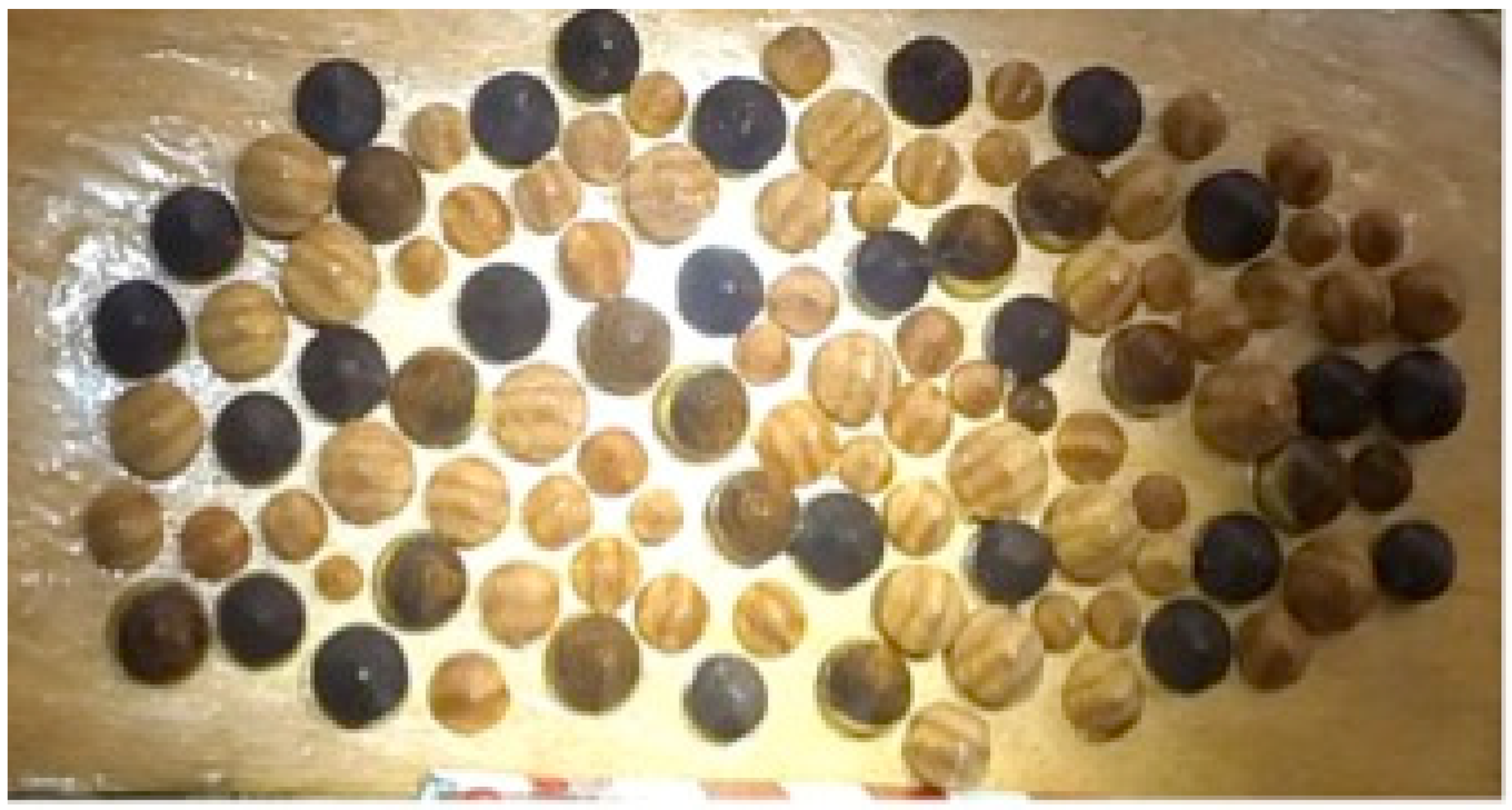
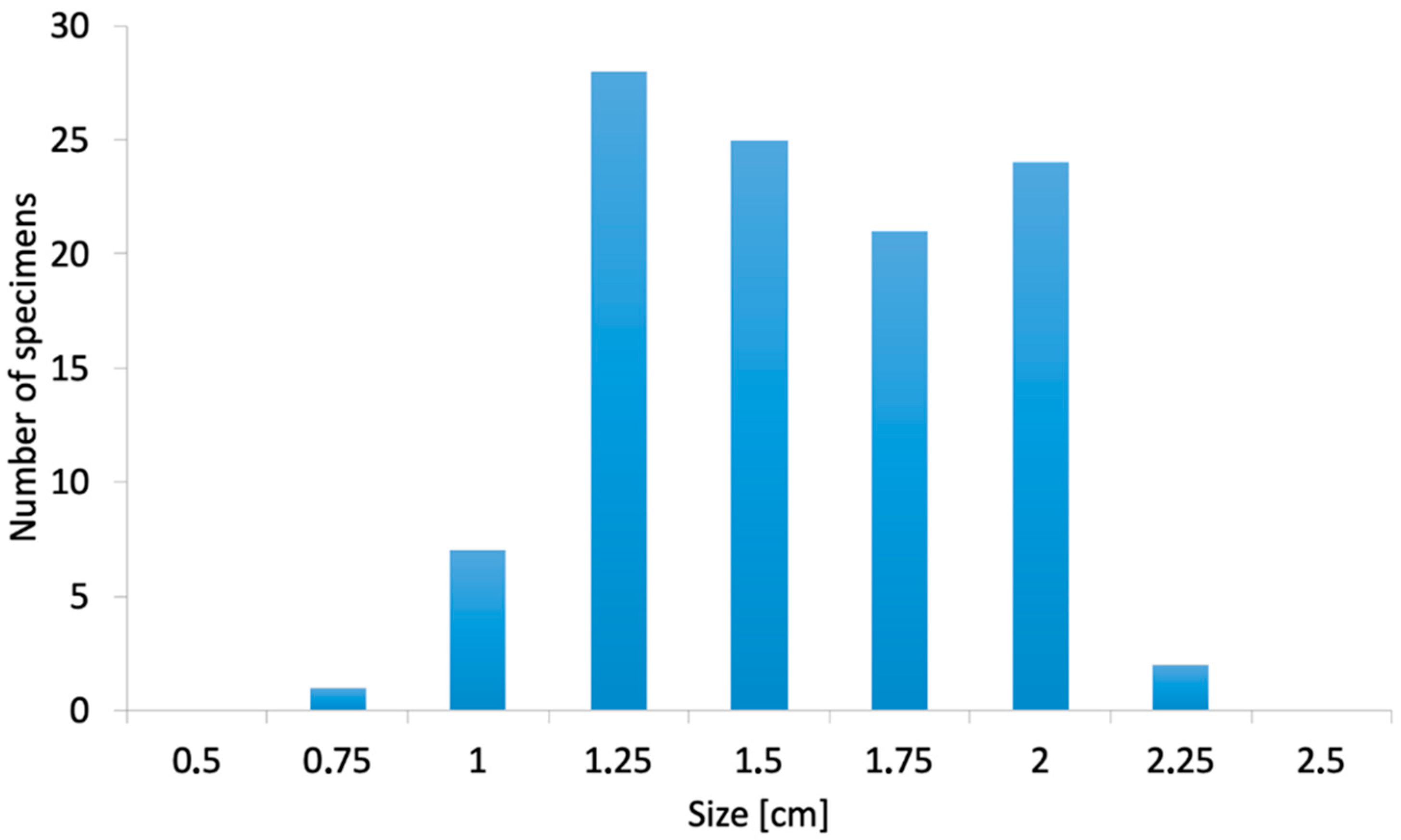

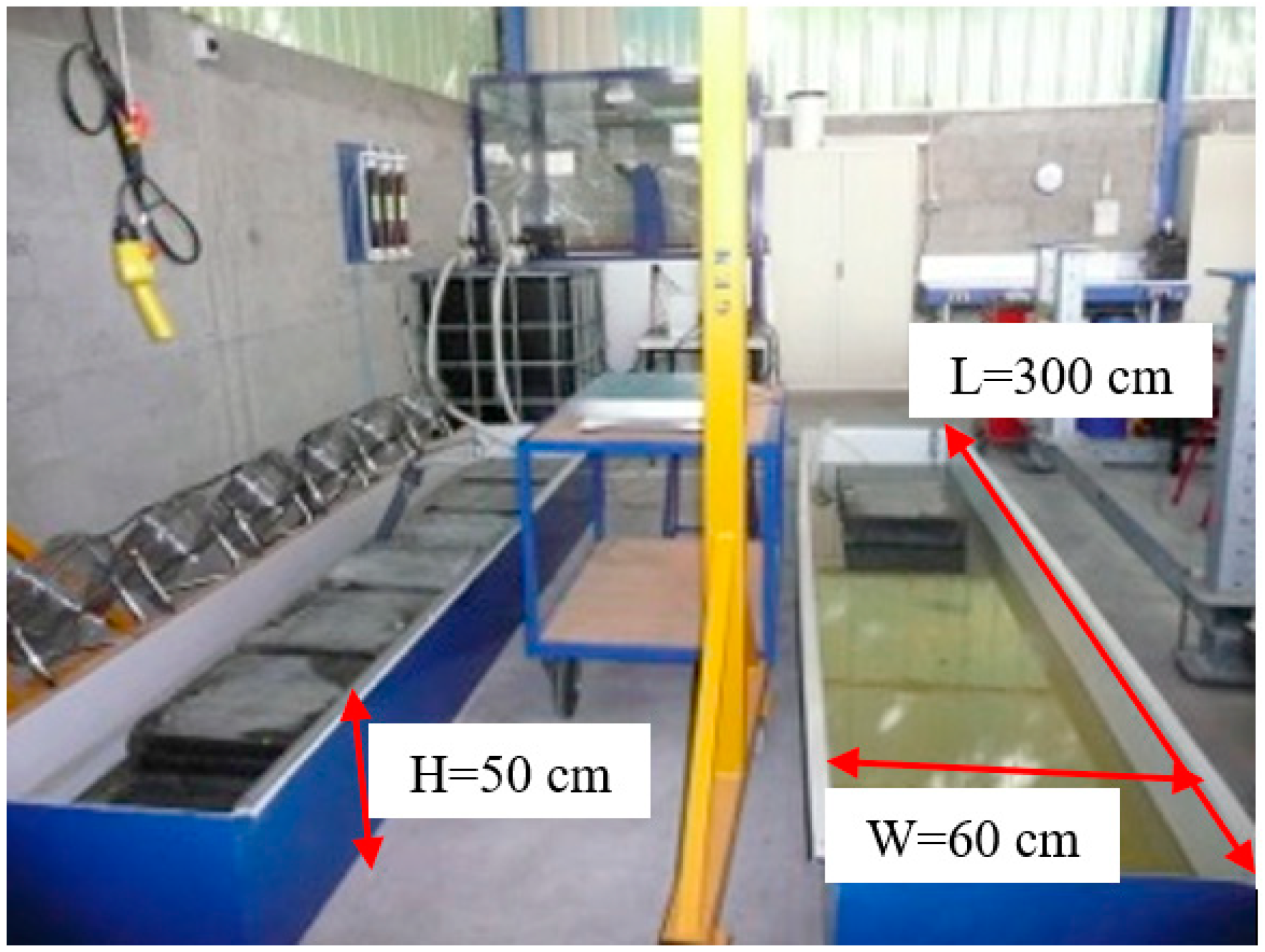

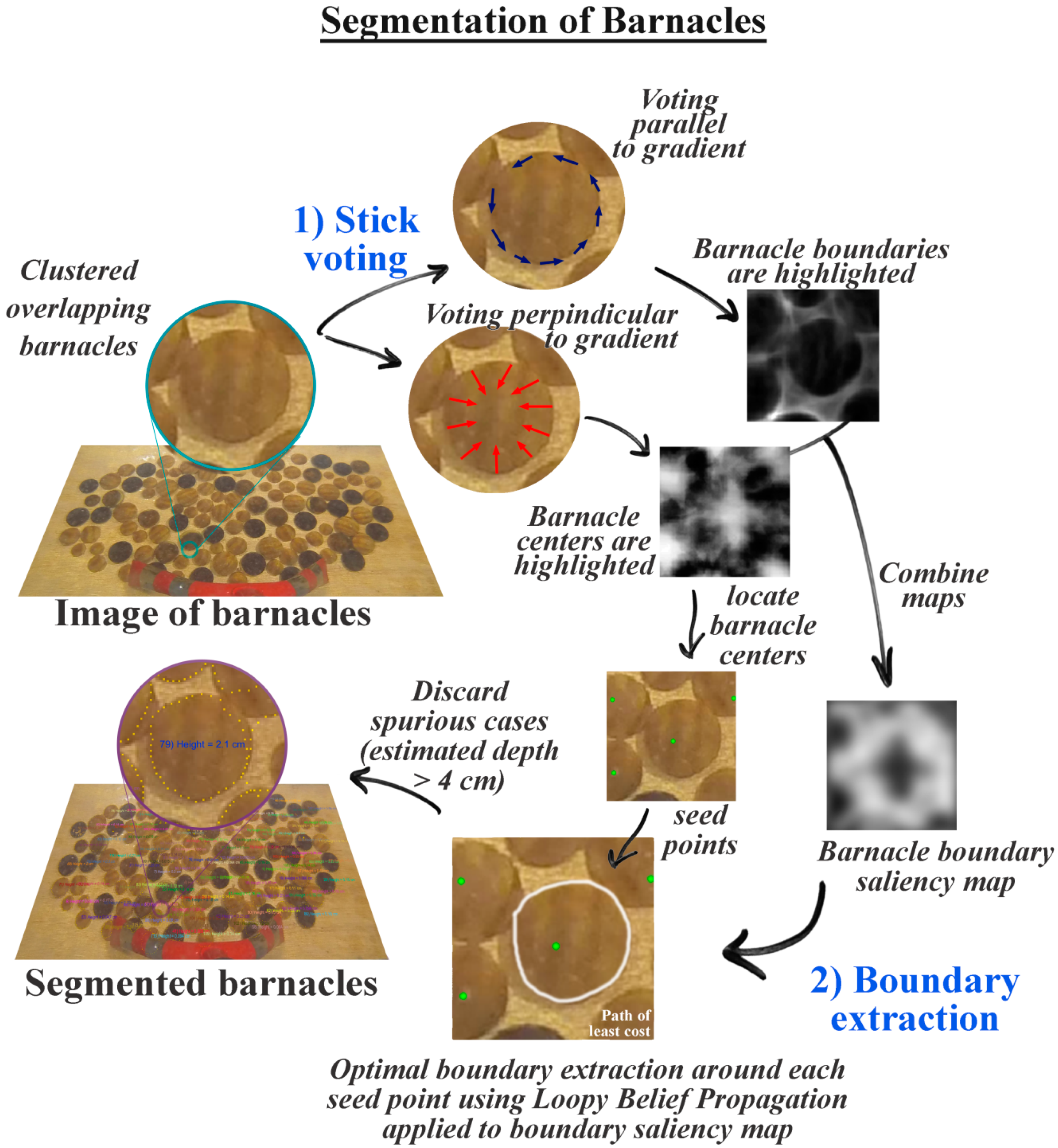
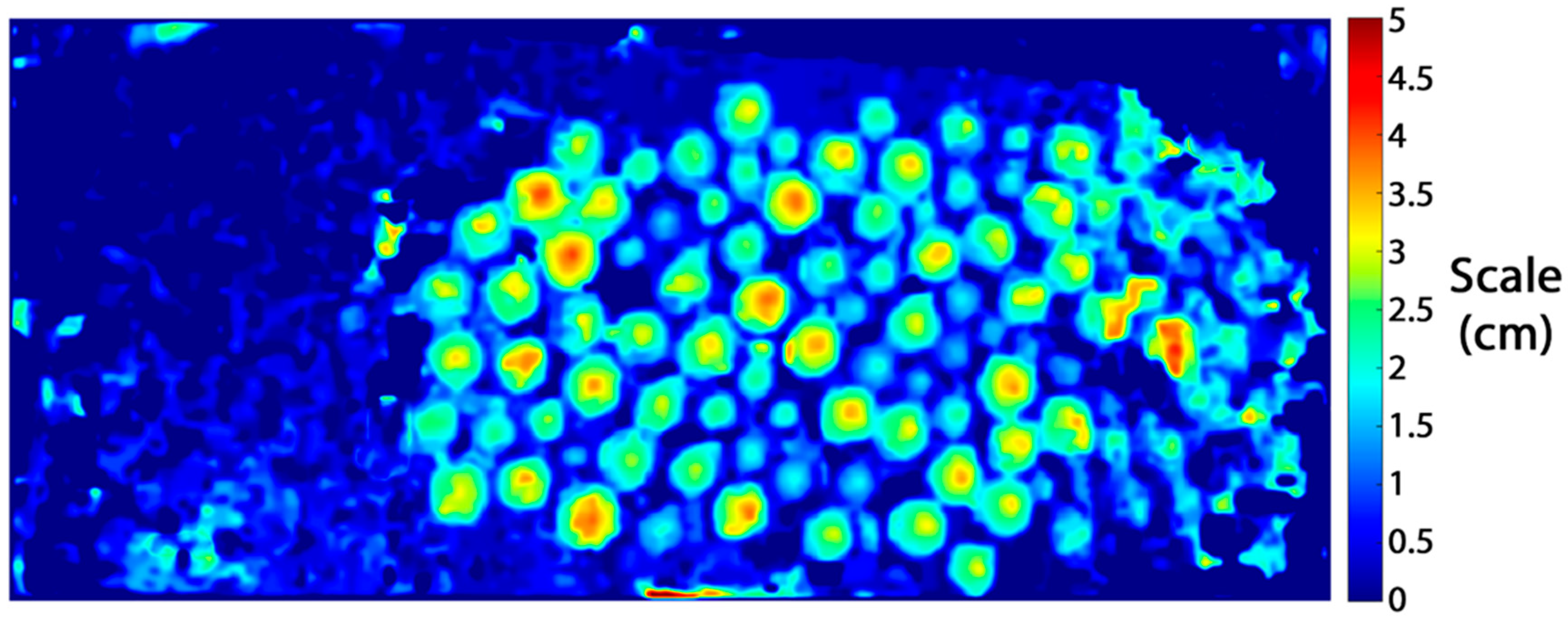
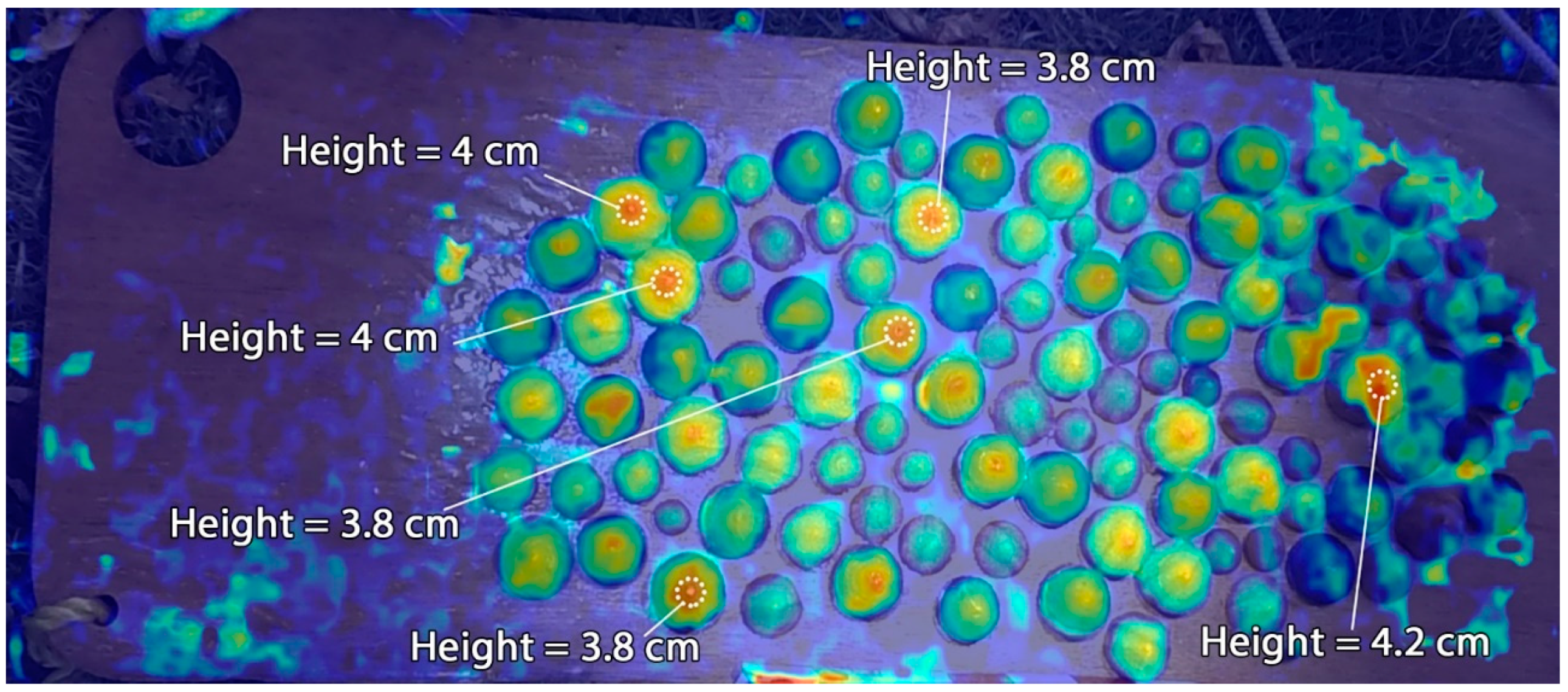
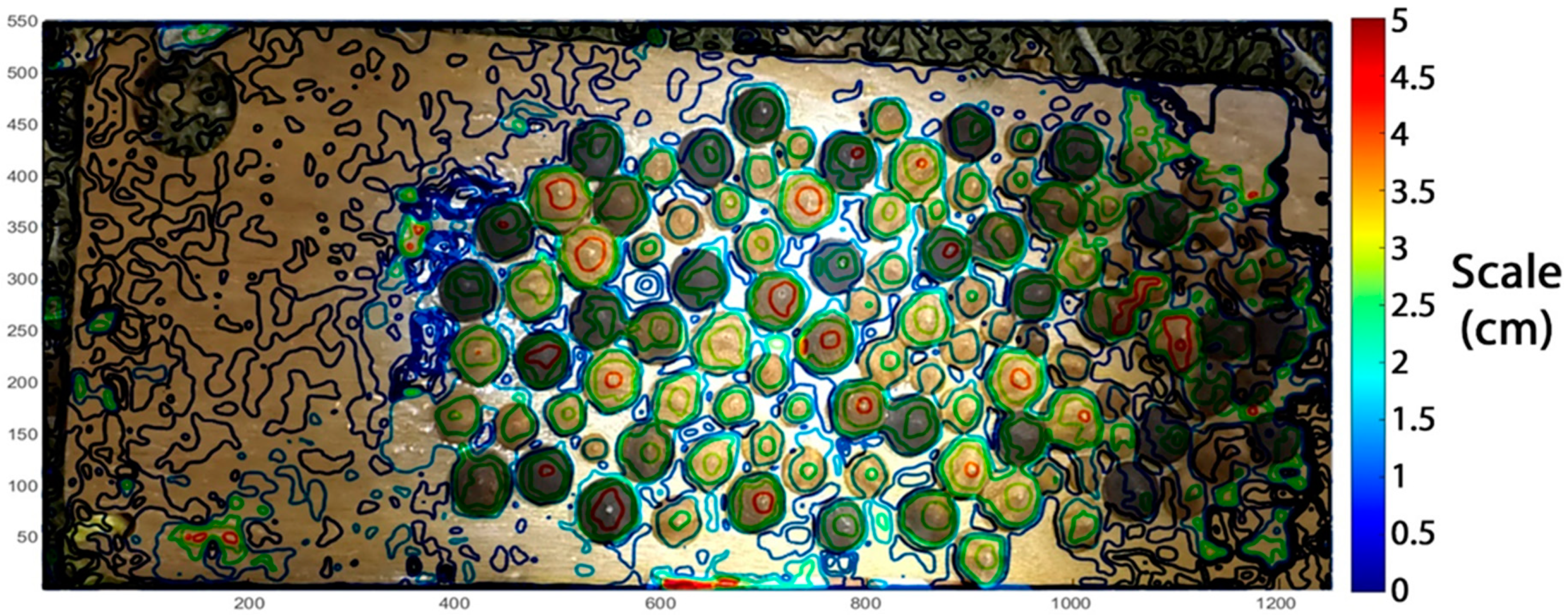

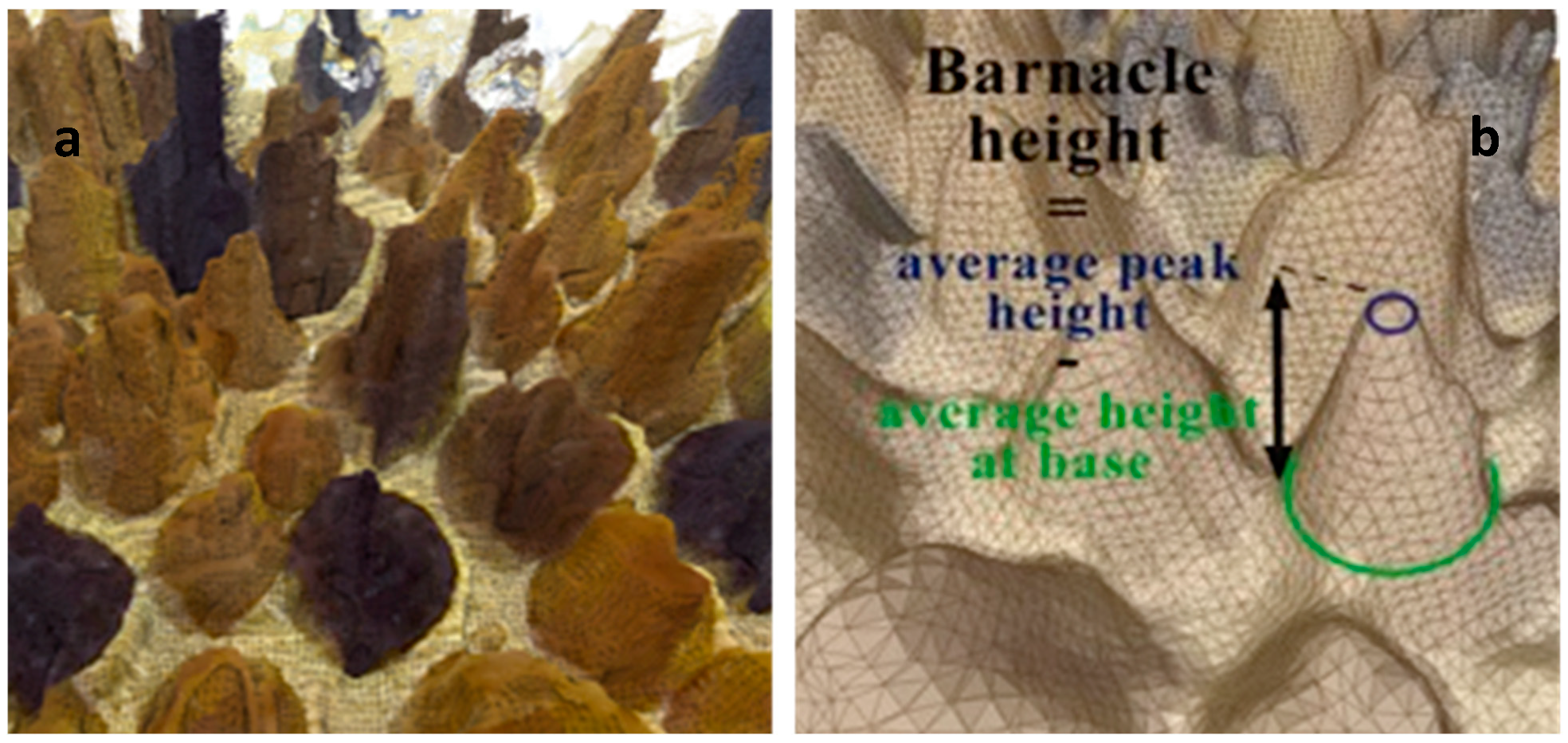

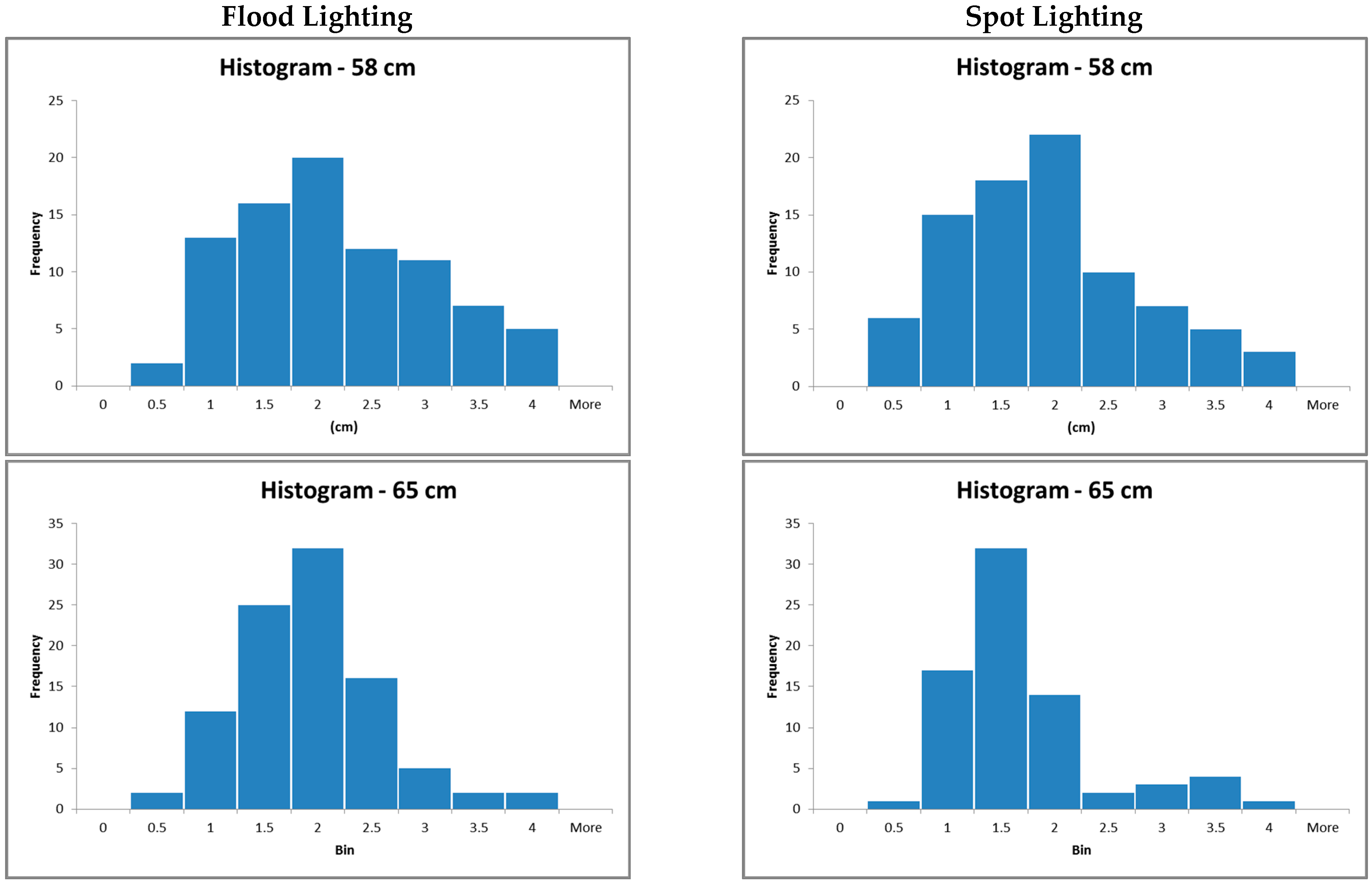

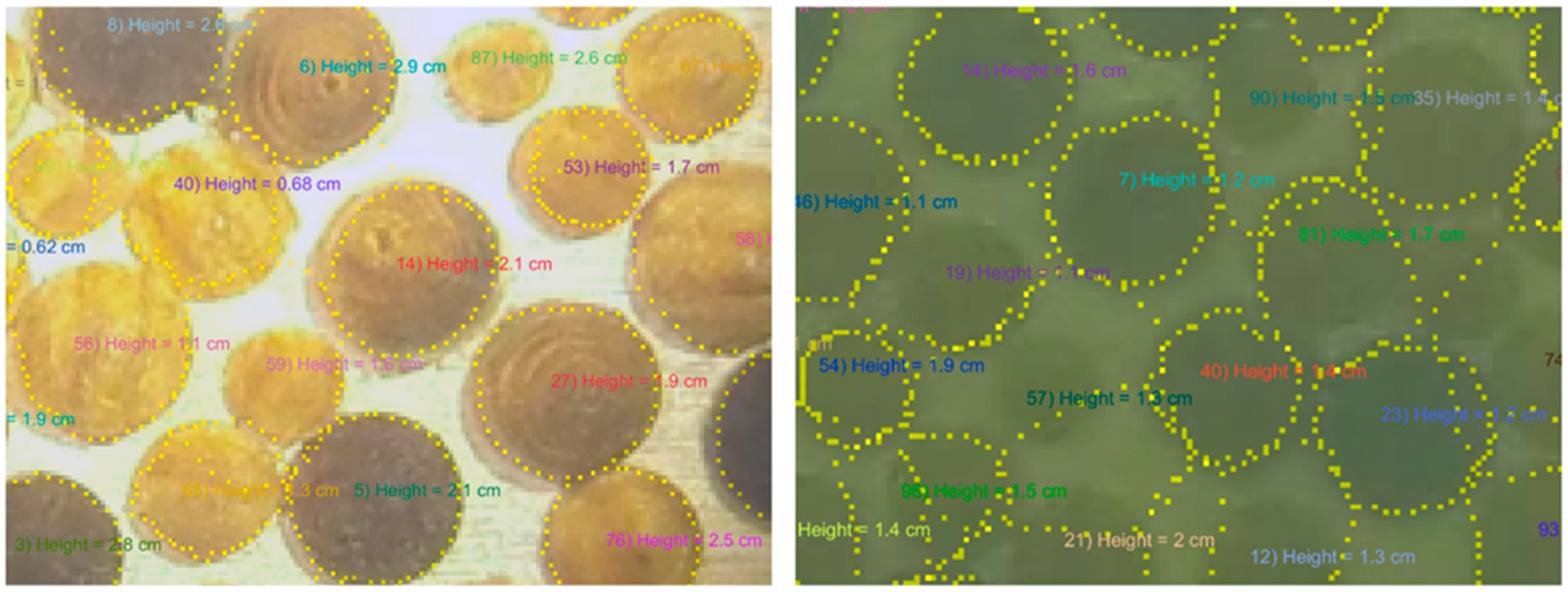
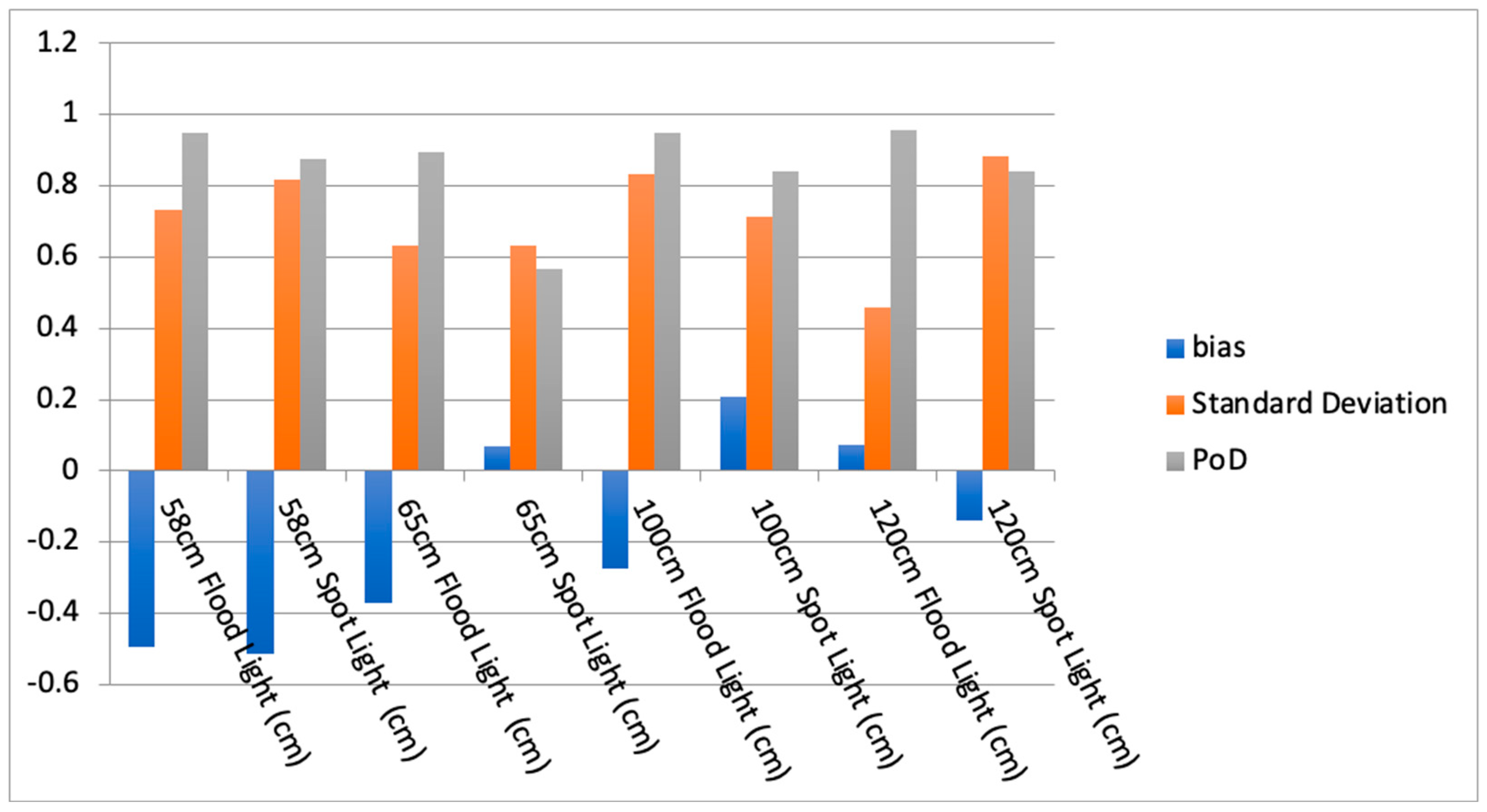
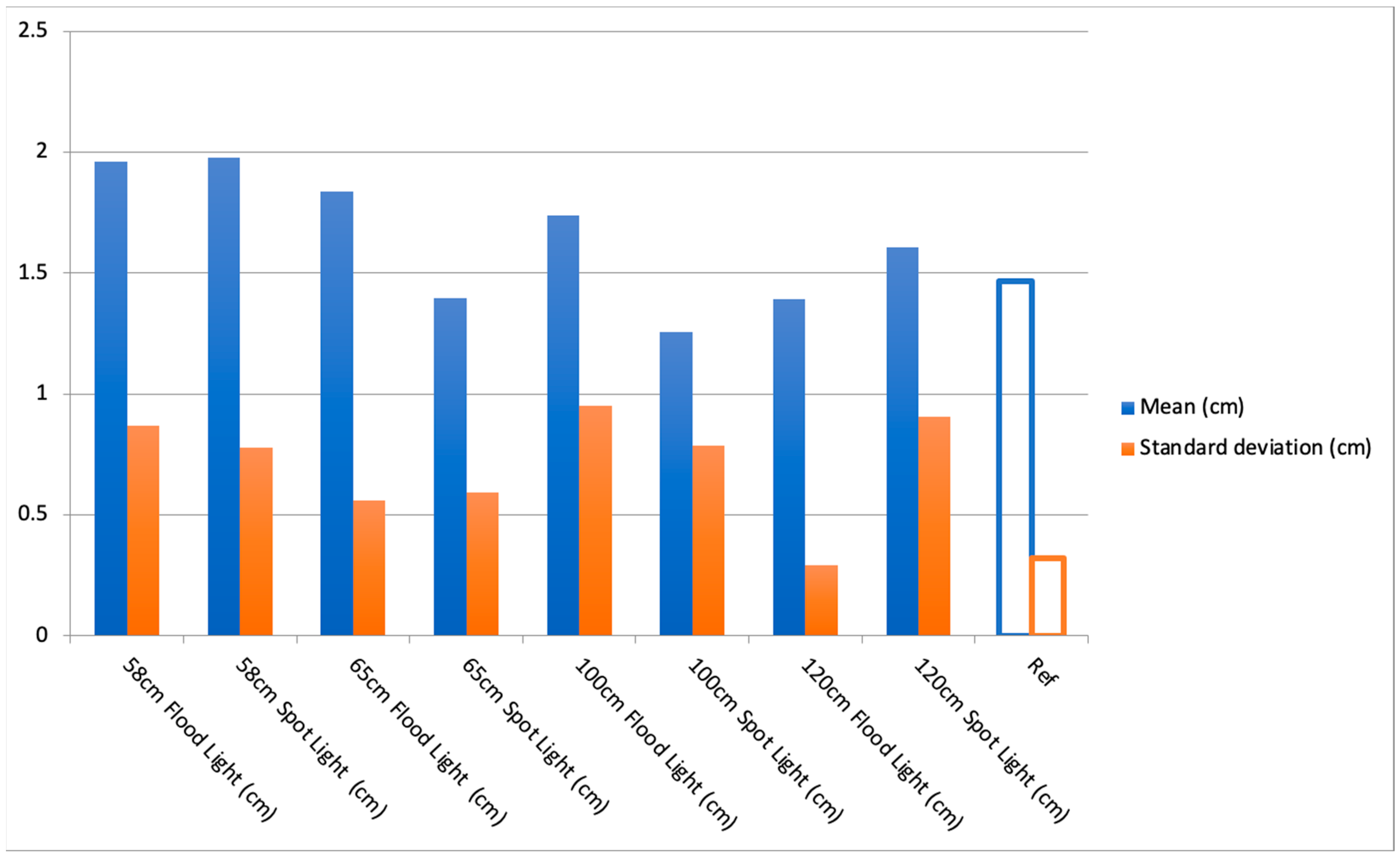

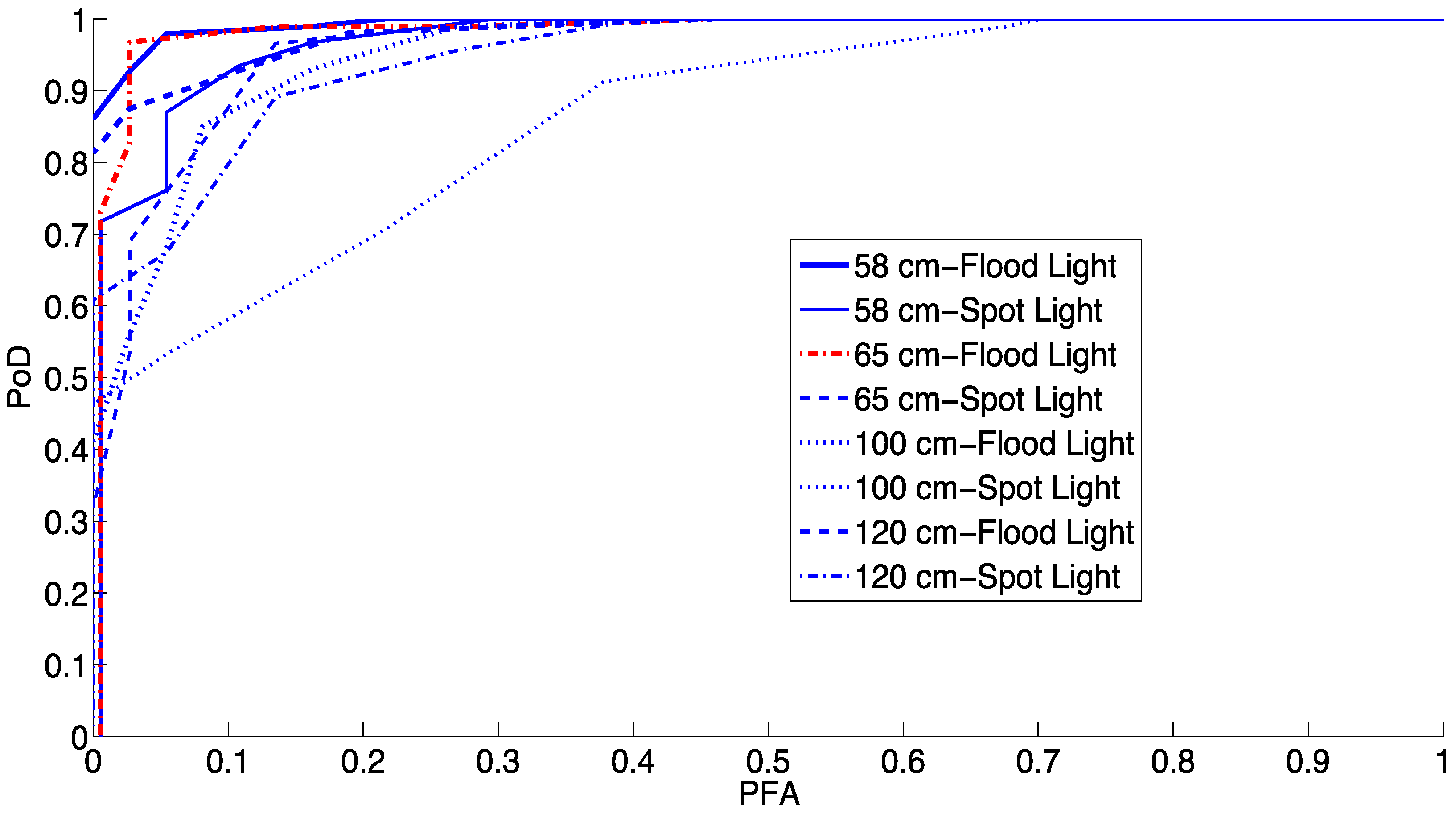


| Method | Power Law | ||
|---|---|---|---|
| Madogram | lag | ||
| Variogram | lag | ||
| Periodogram | spectral density | frequency | |
| Cube-count | number of cubes | with of cube |
| Ref. | Light | |||||||
|---|---|---|---|---|---|---|---|---|
| m | 58 cm Flood | 58 cm Spot | 65 cm Flood | 65 cm Spot | 100 cm Flood | 100 cm Spot | 120 cm Flood | 120 cm Spot |
| 0.04 | 0.5 | 0.3 | 0.3 | 1.4 | 0.7 | 1.2 | 1.1 | 1 |
| 58 cm Flood Light | 58 cm Spot Light | 65 cm Flood Light | 65 cm Spot Light | 100 cm Flood Light | 100 cm Spot Light | 120 cm Flood Light | 120 cm Spot Light | |
|---|---|---|---|---|---|---|---|---|
| Mean | 35 | 35 | 25 | 5 | 25 | 15 | 5 | 10 |
| Standard deviation | 170 | 145 | 75 | 85 | 200 | 145 | 10 | 185 |
| 58 cm Flood Light | 58 cm Spot Light | 65 cm Flood Light | 65 cm Spot Light | 100 cm Flood Light | 100 cm Spot Light | 120 cm Flood Light | 120 cm Spot Light | |
|---|---|---|---|---|---|---|---|---|
| δ | 0.06 | 0.13 | 0.04 | 0.14 | 0.17 | 0.36 | 0.13 | 0.17 |
| ad [cm] | 0.5 | 0.5 | 0.75 | 0.75 | 0.75 | 0.75 | 0.75 | 0.75 |
| Trajectory R1 | Trajectory R2 | Trajectory R3 | |
|---|---|---|---|
| Mean (cm) | 1.9 | 2.1 | 2.1 |
| Standard deviation (cm) | 0.48 | 0.63 | 0.49 |
| CoV (%) | 25 | 30 | 23 |
| Profiles | ||||
|---|---|---|---|---|
| Parameters | ||||
| 1.922 | 2.129 | 2.09 | ||
| 0.406 | 0.511 | 0.3905 | ||
| 0.482 | 0.634 | 0.488 | ||
| 2.168 | 2.497 | 3.476 | ||
| 0.136 | 0.61 | 0.856 | ||
| Profiles | ||||
|---|---|---|---|---|
| Method | ||||
| Madogram | 1.2102 | 1.1934 | 1.1872 | |
| Variogram | 1.2749 | 1.2534 | 1.2378 | |
| Cube-count | 1.2301 | 1.1939 | 1.1941 | |
| Periodogram | 1.4854 | 1.2557 | 1.1857 | |
Publisher’s Note: MDPI stays neutral with regard to jurisdictional claims in published maps and institutional affiliations. |
© 2021 by the authors. Licensee MDPI, Basel, Switzerland. This article is an open access article distributed under the terms and conditions of the Creative Commons Attribution (CC BY) license (https://creativecommons.org/licenses/by/4.0/).
Share and Cite
Schoefs, F.; O’Byrne, M.; Pakrashi, V.; Ghosh, B.; Oumouni, M.; Soulard, T.; Reynaud, M. Fractal Dimension as an Effective Feature for Characterizing Hard Marine Growth Roughness from Underwater Image Processing in Controlled and Uncontrolled Image Environments. J. Mar. Sci. Eng. 2021, 9, 1344. https://doi.org/10.3390/jmse9121344
Schoefs F, O’Byrne M, Pakrashi V, Ghosh B, Oumouni M, Soulard T, Reynaud M. Fractal Dimension as an Effective Feature for Characterizing Hard Marine Growth Roughness from Underwater Image Processing in Controlled and Uncontrolled Image Environments. Journal of Marine Science and Engineering. 2021; 9(12):1344. https://doi.org/10.3390/jmse9121344
Chicago/Turabian StyleSchoefs, Franck, Michael O’Byrne, Vikram Pakrashi, Bidisha Ghosh, Mestapha Oumouni, Thomas Soulard, and Marine Reynaud. 2021. "Fractal Dimension as an Effective Feature for Characterizing Hard Marine Growth Roughness from Underwater Image Processing in Controlled and Uncontrolled Image Environments" Journal of Marine Science and Engineering 9, no. 12: 1344. https://doi.org/10.3390/jmse9121344
APA StyleSchoefs, F., O’Byrne, M., Pakrashi, V., Ghosh, B., Oumouni, M., Soulard, T., & Reynaud, M. (2021). Fractal Dimension as an Effective Feature for Characterizing Hard Marine Growth Roughness from Underwater Image Processing in Controlled and Uncontrolled Image Environments. Journal of Marine Science and Engineering, 9(12), 1344. https://doi.org/10.3390/jmse9121344










